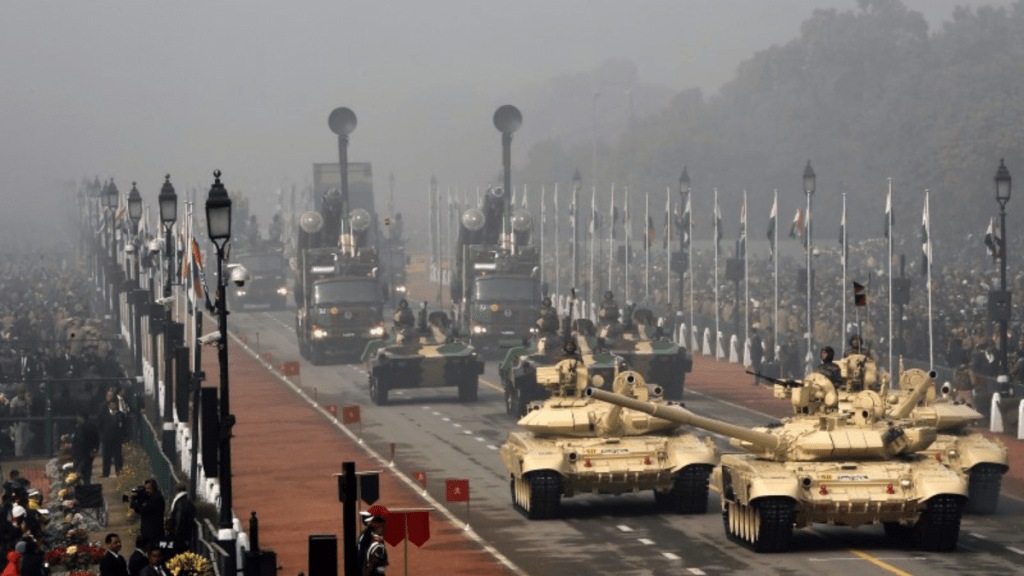In the global landscape of defence spending, India’s defence budget stands out not only in its scale but also in its strategic allocations and priorities. By comparing India’s defence budget with those of other major military powers such as China, the United States, and Russia, one can get insight into the varying priorities and security dynamics that shape these countries’ military strategies.
India’s Defence Budget Overview
India’s defence budget for the fiscal year 2023-2024 is approximately $72.6 billion. This budget allocation signifies a steady increase in defence spending, driven by the need to modernize its military capabilities and address security challenges posed by its geographical and political environment. India’s defence budget focuses on a balance between personnel costs, modernization of equipment, and research and development.
United States: Leading the Pack
Based on the information available in the public domain, the United States maintains the largest defence budget in the world, with a staggering allocation of $858 billion for 2023. The US defence budget is characterized by significant investments in advanced technology, research and development, and maintaining a global military presence. The United States allocates substantial funds towards maintaining and upgrading its nuclear arsenal, cyber capabilities, and space defence initiatives.
China: Rapid Modernization
China, the second-largest spender on defence, has a defence budget of approximately US$230 billion for 2023. China’s defence spending reflects its ambition to modernize the People’s Liberation Army (PLA) and extend its influence in the Asia-Pacific region. The budget emphasizes technological advancements, including artificial intelligence, missile technology, and naval capabilities, reflecting China’s focus on becoming a dominant regional and global military power.
Russia: Strategic Spending Amid Constraints
Russia’s defence budget for 2023 stands at about US$84 billion. Despite economic challenges and international sanctions, Russia maintains a high level of defence spending, prioritizing strategic deterrence and modernization of its nuclear forces. Russia’s military budget also focuses on developing advanced missile systems, cyber warfare capabilities, and maintaining its military presence in regions such as the Arctic and Eastern Europe.
Comparative Analysis of Spending Priorities
India’s defence budget allocates a significant portion to personnel costs, including salaries, pensions, and welfare. This reflects the country’s need to maintain a large standing army due to its strategic positioning and border disputes with neighbouring countries. In contrast, the United States, while also having substantial personnel costs, invests heavily in technology and innovation to maintain its global military dominance.
China and Russia, though investing in personnel, place a higher emphasis on modernization and technological advancements. China’s focus on reducing the size of its military in favour of advanced capabilities highlights a shift towards quality over quantity. Russia’s spending on personnel is relatively lower, with a greater emphasis on strategic assets like nuclear forces.
Modernization and Equipment
India’s defence budget prioritizes the modernization of its military equipment, including procurement of advanced fighter jets, submarines, and missile systems. The need to counter regional threats and maintain a credible deterrence drives this focus on upgrading its arsenal. The United States, with its vast budget, leads in this category, investing in cutting-edge technologies such as stealth aircraft, hypersonic weapons, and space-based defence systems.
China’s defence spending on modernization is significant, with a strong emphasis on developing indigenous technology and reducing dependency on foreign arms. The rapid expansion of its navy and advancements in missile technology demonstrate China’s strategic goals. Russia, despite budgetary constraints, prioritizes modernizing its strategic forces and developing next-generation weaponry to maintain its military edge.
Research and Development
Research and development (R&D) is a critical area where the United States outspends other countries by a wide margin. The US defence budget allocates a substantial amount to R&D, driving innovation in areas such as artificial intelligence, cyber defence, and advanced weaponry. This investment ensures that the US military remains at the forefront of technological advancements.
India’s investment in R&D, though significant, lags behind that of the United States and China. India’s focus on indigenization and self-reliance in defence production is evident in its R&D spending, aiming to reduce dependence on foreign arms imports. China’s R&D investment is robust, supporting its goals of technological superiority and self-sufficiency in defence capabilities.
Russia’s R&D spending, while constrained by economic factors, focuses on developing strategic systems and maintaining its nuclear deterrent. The emphasis on innovation within limited resources underscores Russia’s strategic priorities.
Regional Security Dynamics
The defence spending patterns of these major powers have significant implications for regional security dynamics. India’s increasing defence budget and focus on modernization are driven by the need to address security challenges from neighbouring countries such as China and Pakistan. The ongoing border disputes with China and the complex security situation in the Indian Ocean region necessitate a robust defence posture.
China’s rapid military modernization and expansionist policies, particularly in the South China Sea and along its borders, create a sense of urgency for neighbouring countries, including India, to enhance their defence capabilities. The strategic rivalry between India and China is a key factor influencing defence spending in the region.
The United States, with its global military presence, plays a crucial role in maintaining regional stability and countering potential threats from major powers like China and Russia. The U.S. commitment to alliances and partnerships in the Asia-Pacific region, including with India, aims to balance China’s growing influence.
Russia’s defence spending and strategic focus on areas such as Eastern Europe and the Arctic highlight its intent to assert its influence and protect its interests amidst geopolitical tensions with NATO and Western countries.

